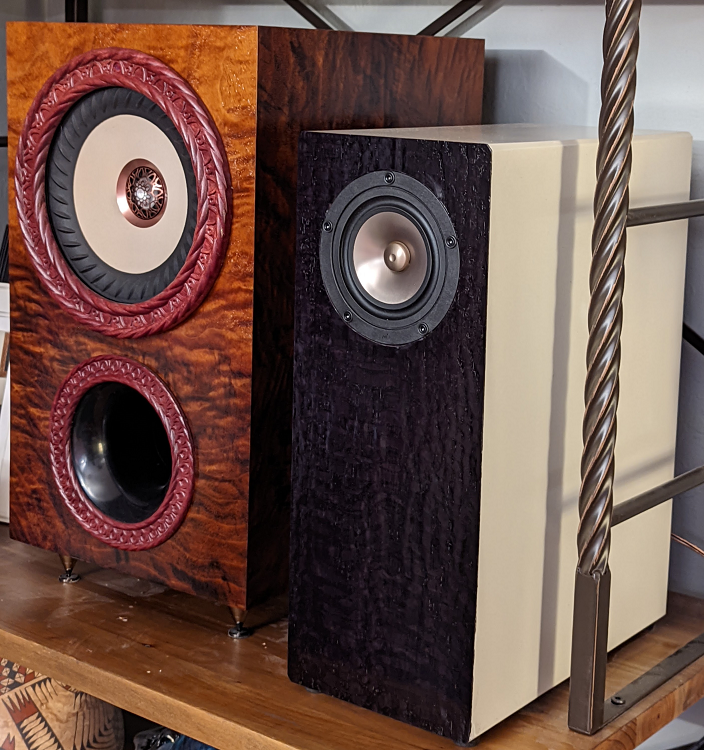
Smoke and Fire Full Range
Designer:
Bobby Kinstle
Project Category:
Bookshelf Speakers
Project Level:
Beginner
Project Time:
8-20 Hours
Project Cost:
$100 – $500
Project Description:
This is a full range design intended to explore the concept of purist simplicity popular in some audiophile circles. I’ve seen similar designs online with drivers from Fostex, Aiyima, and Mark Audio and wanted to see what all the fuss was about.
Design Goals:
The main goal of the design was to cover an acceptable frequency range with good bass, clear mids, and detailed highs. My other goals where to teach myself how to build a box using all miter joints and the work on improving my painting and veneering skills.
Driver Selection:
I chose the MarkAudio Pluvia 7.2HD driver because it had a flat response to 30khz, which is amazing for a full range driver, and also in simulation played down to F3 at 43Hz. Frankly the simulation results were unbelievable to the point of assuming something had gone wrong, but I checked it a few different ways and kept getting the same answer so I decided to try it out.
Enclosure Design:
The enclosure is a simple box but every board has a 45 degree miter joint on all sides to conceal the board ends at the joints. It’s made of ½” MDF which is fine since this is a low power application. Internal volume is 15L which is the ideal volume in simulation for this driver. Port calculations said minimum port diameter of 1.25” but I went with a 2” port 7 inches long so I could use a precision port as those always make the bottom bass range so lusciously smooth. The bottom has 4 rubber feet. The electrical connections were mounted about one fist above the bottom and 2” apart so I’d have enough room to comfortably tighten them with a lot of force.
Enclosure Assembly:
I glued the top, bottom, and sides using painters tape to hold everything in position until I could get the band clamps in place and that worked pretty well. After that was dry I dropped in the front and back with mild clamping pressure so not to bow the box outwards. Circular cuts were made with a circle jig on my router and done before box assembly. I drilled 2 holes for the terminals slightly smaller than the knurl and then hammered them into position to form a tight seal and strong joint that will never spin when tightening.
Crossover Design:
None. Zip. Zilch. Nada. Nope.
Tips & Tricks:
Tips and Tricks
1. Don’t be afraid to experiment. Make mistakes. Learn why they happened, and then fix them.
2. Test finishes with materials like dyed veneer and let them sit for the FULL cure time listed from the manufacturer. My veneer changed color 3 days after application.
3. Contact cement isn’t strong enough for natural wood veneer.
4. Always check the wire hole orientation on the binding posts before hammering them in.
5. Metric drivers require metric circle jigs.
6. The best way to get a smooth finish is to apply sanding sealer, sand it smooth and paint. Skip the primer. Causes more problems than it solves.
7. Invest in an HVLP sprayer. It’s so much better than rattle cans.
8. Beware experimental projects that you intend to give to your friends afterwards. You might like them so much it’s hard to let go of them. Or you can visit your friends more often and ask them to play music.
Conclusion:
TL:DR These MarkAudio Pluvia drivers punch so far above their weight class that they risk hitting airplanes.
These speakers absolutely smashed it. I didn’t expect much from these drivers as I’ve always been a disappointed with full range drivers in the past. But I can’t think of a time I’ve been more pleasantly surprised by a speaker. The sound is rich, clear, and full. Highs are clean and not overly bright. Midrange is smooth and mellow. Vocals are a little forward. Violins and brass are buttery smooth. Cello is thick and meaty. Did I mention lows? The bass on these is simply astonishing. How can such a small speaker produce so much bass and still be clean? Reading this you won’t believe me until you’ve heard a set yourself. I’m listening to them as I type this and I still don’t believe it.
They sound great from 60-80dB and have a very wide dispersion. Highs are perfect up to 30 degrees off axis and still quite good to 45. They play fantastic in near and mid field and are perfectly at home on the desktop close by but also have no difficulty filling my 16×24’ living room. The sound character is very similar to the TangBand bamboo cone drivers. I haven’t found any music that sounds bad on them, even bass heavy EDM comes out great as long as you don’t turn it up too loud. Male and female vocals both sound fantastic but with a slight forward bias on male vocals. When I show these to people they think the much larger speakers next to them are making all the sound. Amplifier quality matters on these speakers a lot. Small chip amps sound a little harsh in the midrange with these but good class AB and better amps sound wonderful. They pair well with a small class A or tube amp too.
The lack of crossover components means these are super easy to build at a reasonable price. I think they would make excellent surround sound speakers in a 7.1 Atmos setup, even if you had full size mains.
About the Designer:
I grew up in the Mojave Desert in a small community of scientists, craftsmen, and engineers. We were the kind of people who didn’t accept “it’s impossible” or “you can’t do that”. If I want something that doesn’t exist, I’ll just make one. Now I’m a thermal engineer in the computer industry and I currently hold 17 patents worldwide.

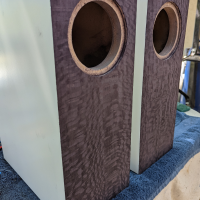
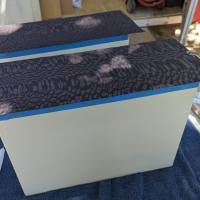
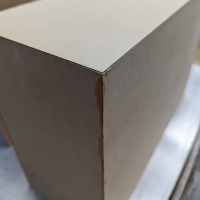
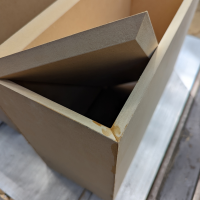
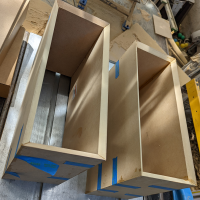
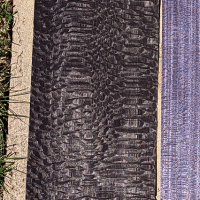
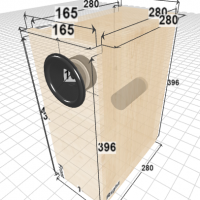
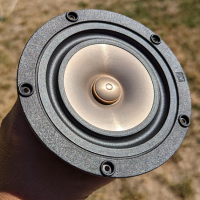
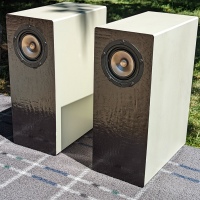
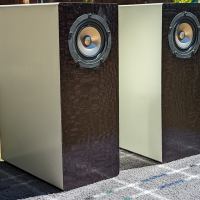

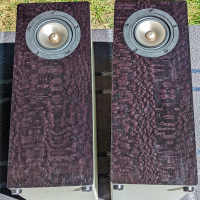

Someone on reddit asked me to make the build plans available so here they are:
https://docs.google.com/spreadsheets/d/1iX6Xdh3j_wmwC126bp4EXgaDIzkzINDRAYg9diMuwOA/edit?usp=sharing
Note the drawing uses butt joints and I used miter joints. No biggie.